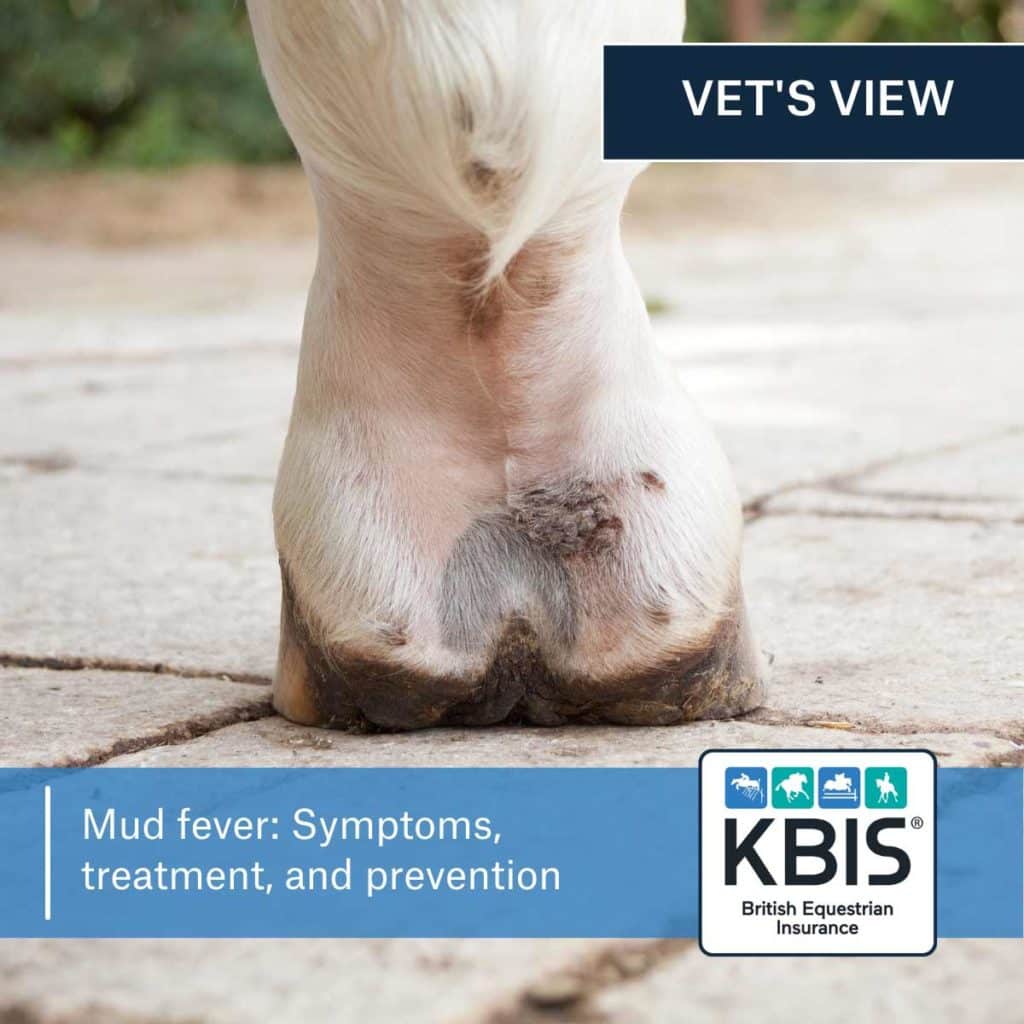Mud fever is a persistant problem for many horse owners. Although typically associated with wet muddy conditions seen in the winter, vets at the Horse Health Programme are often seeing cases throughout the year. Alex Wood BVetMed CertAVP(EM) MRCVS of B&W Equine Vets in Gloucestershire, explains the condition, the symptoms, treatment options, and prevention techniques.
What is mud fever?
Mud fever, also known as pastern dermatitis or ‘cracked heels’ is a skin condition generally caused by a bacteria called Dermatophilosis congolensis. This bug is what’s known as a skin commensal which means it lives on the surface of normal, healthy horse skin. It causes an issue when repeated wetting (or rubbing) of the skin causes tiny areas of damage which then allow the bacteria to invade deeper into the skin. It tends to affect the pastern and cannon regions and white limbs are generally more susceptible.
It tends to start as red, sore areas of skin that can progress to thick scabs and weeping sores. It can be very painful to touch and can sometimes cause lameness. Left untreated, the infection can track deeper into the subcutaneous tissues, causing a painful condition known as cellulitis. This is characterised by a hot, swollen and very painful limb.
How do we treat mud fever?
If your horse has mud fever it is important that the affected areas are thoroughly washed with hand-hot, dilute antimicrobial skin cleanser solution, such as Hibiscrub. This should be worked into the skin and as many of the scabs lifted away as possible. As this can be painful for the horse sedation may be needed to facilitate this. After rinsing away the skin cleanser solution it is vital that the skin is dried thoroughly – clean towels, paper towels and possibly even a hair drier can help.
Once the areas are clean and dry a medicated cream will need to be applied. Your vet can advise on a suitable cream. Most cases only require topical treatment, but cases with very deep sores or cellulitis may require oral or injectable antibiotics.
When dealing with a case of mud fever we will also check your horse for feather mites and treat these if necessary as these can exacerbate the condition.
How can it be prevented?
As with most things, prevention is better than cure and there are various management techniques that can be employed to prevent mud fever. Avoiding wet, muddy conditions is the key, so keeping gateways and shelters mud free (try putting down wood chip in high traffic areas) and bringing horses off muddy pasture is preferable.
The use of protective mud fever boots and barrier creams can help if your horse is turned out, but the Skin MUST be clean and completely dry before applying any barrier creams or boots.
If your horse’s legs do get muddy remember that wet, macerated skin provides the perfect conditions for the bacteria to grow and multiply so it is no good religiously washing your horse’s legs clean everyday unless they are thoroughly dried too. If possible it is far better to let the mud dry naturally and then brush it off. Clipping of hairy legs can be very useful as it facilitates keeping the legs clean and dry, and provides better visibility so any lesions are likely to be noticed and treated earlier. If your horse has very heavy feathers and lives out 24/7 however, you may be better to leave the feathers on to provide some degree of protection to the legs, provided you do not wash the legs unnecessarily.
Article with thanks to the Horse Health Programme. For more advice from vets like Alex, including the importance of preventative healthcare, visit our Vets View blog.

